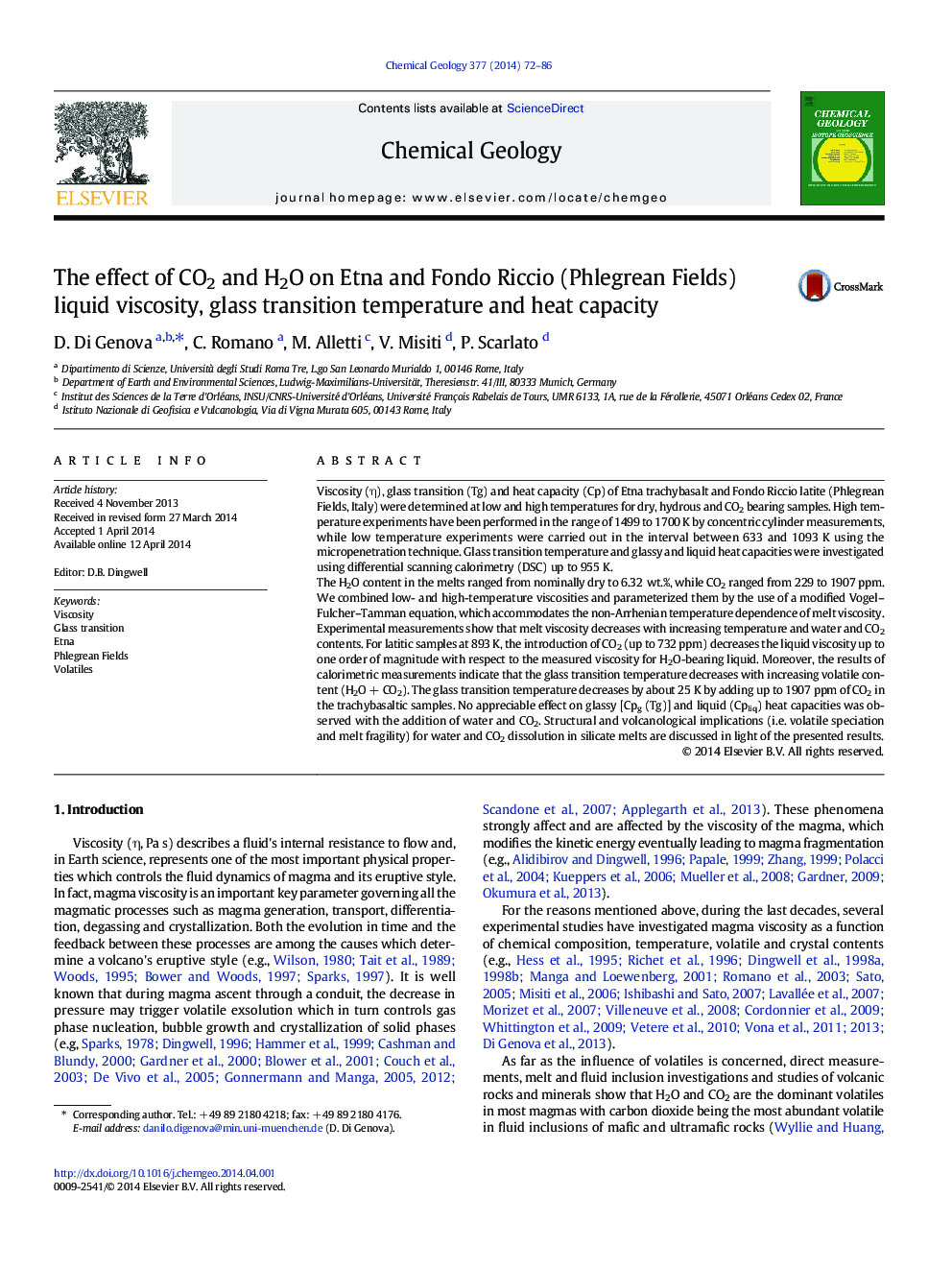| Article ID | Journal | Published Year | Pages | File Type |
|---|---|---|---|---|
| 4698774 | Chemical Geology | 2014 | 15 Pages |
•We measured viscosities of trachybasaltic and latitic melts as a function of T, H2O and CO2 contents.•We measured heat capacities of trachybasaltic and latitic melts as a function of T, H2O and CO2 contents.•Experimental measurements show that melt viscosity decreases with increasing temperature and water and CO2 contents.•No appreciable effect on glassy and liquid heat capacities was observed with the addition of H2O and CO2.•A viscosity model for latitic melt as a function of T, H2O and CO2 is proposed.
Viscosity (η), glass transition (Tg) and heat capacity (Cp) of Etna trachybasalt and Fondo Riccio latite (Phlegrean Fields, Italy) were determined at low and high temperatures for dry, hydrous and CO2 bearing samples. High temperature experiments have been performed in the range of 1499 to 1700 K by concentric cylinder measurements, while low temperature experiments were carried out in the interval between 633 and 1093 K using the micropenetration technique. Glass transition temperature and glassy and liquid heat capacities were investigated using differential scanning calorimetry (DSC) up to 955 K.The H2O content in the melts ranged from nominally dry to 6.32 wt.%, while CO2 ranged from 229 to 1907 ppm. We combined low- and high-temperature viscosities and parameterized them by the use of a modified Vogel–Fulcher–Tamman equation, which accommodates the non-Arrhenian temperature dependence of melt viscosity. Experimental measurements show that melt viscosity decreases with increasing temperature and water and CO2 contents. For latitic samples at 893 K, the introduction of CO2 (up to 732 ppm) decreases the liquid viscosity up to one order of magnitude with respect to the measured viscosity for H2O-bearing liquid. Moreover, the results of calorimetric measurements indicate that the glass transition temperature decreases with increasing volatile content (H2O + CO2). The glass transition temperature decreases by about 25 K by adding up to 1907 ppm of CO2 in the trachybasaltic samples. No appreciable effect on glassy [Cpg (Tg)] and liquid (Cpliq) heat capacities was observed with the addition of water and CO2. Structural and volcanological implications (i.e. volatile speciation and melt fragility) for water and CO2 dissolution in silicate melts are discussed in light of the presented results.
